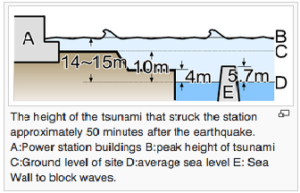History repeats itself but we forget that repeating doesn’t necessarily mean repetition of the same patterns. At the end of the day, what we learn from history is that we don’t learn from history.
It was a Friday on March 11, 2011 when a massive earthquake with an intensity of 9 on Richter scale hit off the coast of Japan at 2:26 pm local time. The epicentre of the quake was 70 kilometre east of the Oshika Peninsula of Tōhoku.
The earthquake triggered powerful tsunami waves that reached heights of up to 40 metres. It took 50 minutes for the largest wave in the tsunami to arrive at the shores of Fukushima. What followed was something totally unimaginable and unexpected for those who take pride in taming the mother nature.
The Fukushima Daiichi nuclear power plant had six separate boiling water reactors, protected by a 10-meter-high seawall to prevent sea waves from entering the plant.
When the tsunami struck the Fukushima coastline, the gigantic waves easily overtopped the plant’s seawall. It took seconds to flood the basements of the turbine buildings and disabling the emergency diesel generators. Soon the backup generator building was also flooded. This resulted in an explosion and leakage of radioactive material to the sea water and created a huge nuclear hazard.
 Why would the engineers and designers of Fukushima nuclear power plant build a wall only 10-meter high? What made them believe that the waves can’t breach the 10-meter height? The reason was that the engineers had never seen sea waves as high as 10 meters in that area for the recorded history.
Why would the engineers and designers of Fukushima nuclear power plant build a wall only 10-meter high? What made them believe that the waves can’t breach the 10-meter height? The reason was that the engineers had never seen sea waves as high as 10 meters in that area for the recorded history.
- Spotlight: Big ideas from Value Investing and why applying them in your investment decision making will be a great deal
- InvestorInsights: Interviews with experienced value investors, learners, and deep thinkers
- StockTalk: Thorough analysis of business models of companies (without any recommendations)
- Behaviouronomics: Deep analysis of human behaviour and how it impacts investment decision making
- BookWorm: Reviews of the best books on Value Investing and related subjects
- Free Course – Financial Statement Analysis for Smart People (otherwise priced at Rs 5,900)
- Archives: Instant access to our huge archive from the past three years